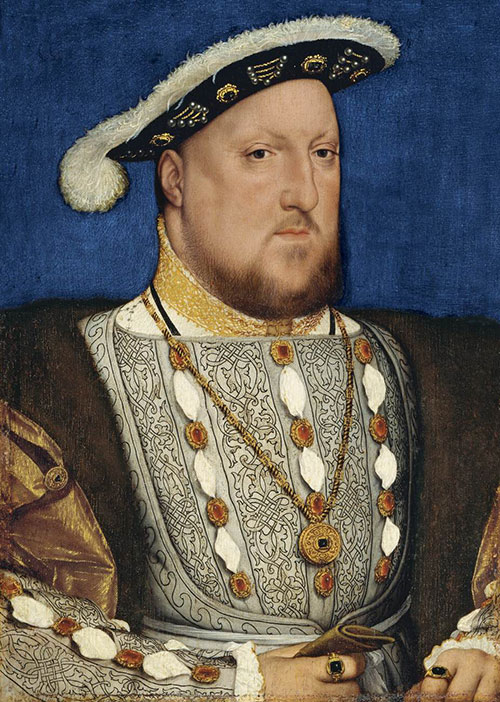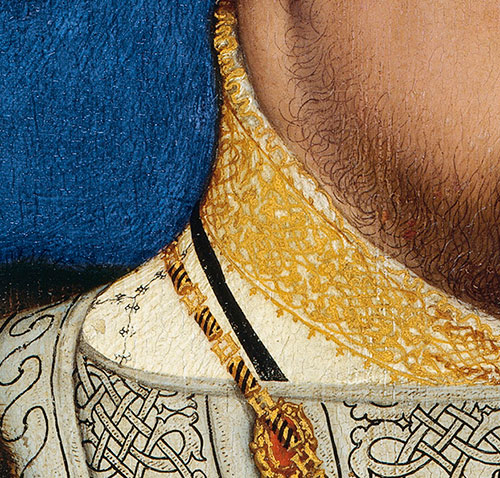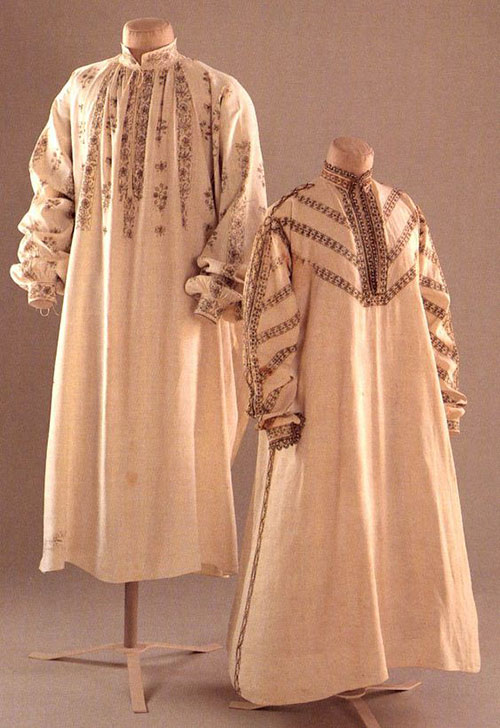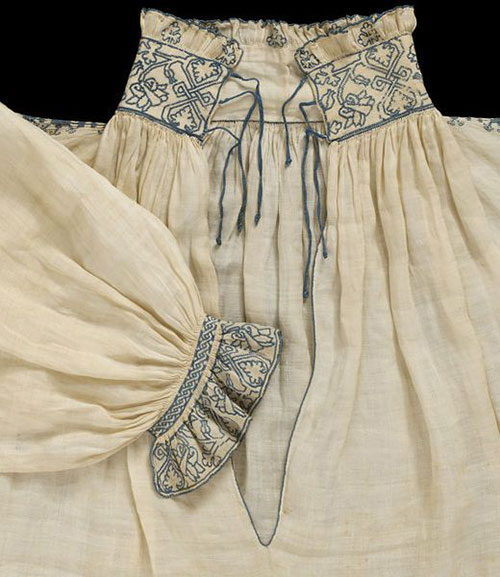 A chemise or shift became widely used by both men and women in Europe in the medieval period and lasted for a few centuries. Even in the 21st century, some women wear similar lingerie but, of course, the cut, design, and adornments are different. In this article, we’ll talk about the chemise worn during the Early Modern era – how did it look like? what embellishments were popular? what fabric did they use? what design of shirts was typical? and so on. The 16th-17th century brought a lot of new trends into fashion, including underwear fashion.
A chemise or shift became widely used by both men and women in Europe in the medieval period and lasted for a few centuries. Even in the 21st century, some women wear similar lingerie but, of course, the cut, design, and adornments are different. In this article, we’ll talk about the chemise worn during the Early Modern era – how did it look like? what embellishments were popular? what fabric did they use? what design of shirts was typical? and so on. The 16th-17th century brought a lot of new trends into fashion, including underwear fashion.
Read also: Underwear in Europe in the Early Modern period: braies and pantaloons
An Early Modern shift was a very important undergarment. And it is totally understandable – you can imagine how handy these pieces were during the period of elaborate corseted gowns made from silk, brocade, velvet, etc. People couldn’t wash their clothing often and there was no dry cleaning at the time. So they used comfortable linen chemises underneath that were easy to laundry and perfectly soft to the body. Also, you can’t wear a corset or even a boned bodice directly on naked skin – it would be a really painful experience, so females wore their corsetry over a chemise.
Until the early 16th century, all the underwear pieces were carefully hidden from sight under the main garments. Even male shifts were fully concealed. But the early 1500s brought a new fashion trend – people started to wear their chemises slightly peaking from under their upper clothing. Usually, the sleeves (or only cuffs) and a bit of a neckline were visible. Accordingly, this is a period when underwear items became embellished. Everyday shifts worn under the upper robes got adornments only in those places that peaked – a narrow decorative element on the neckline and embellished cuffs or even the whole sleeves. Still, the main body of a chemise remained plain because it wasn’t visible.

Artemisia Gentileschi “Judith And Her Maidservant”, 1620s. The painting is stored in the Detroit Institute of Arts. You can see the chemise peaking from under the gown; there is a beautiful decoration on the neckline and cuffs
But if we’re talking about nightshirts, and especially wedding nightshirts, they could be very ornate – the embellishments often covered almost the whole shift (front, back, sleeves, cuffs, and neckline). Though, such chemises were extremely expensive, so only the upper classes could afford them. The most beautiful and richly adorned nightshirts were used by the royals obviously.
Now, let’s go back to the everyday chemises. The main material used to make underwear in Europe in the 16th-17th centuries was linen. It is a myth that wealthy people wore silk shifts – they were too expensive and too delicate to wash them frequently (and that’s the main purpose of a chemise). Also, Europeans didn’t use cotton as widely as people in the East and in Asia because it doesn’t grow in the local climate. So, only linen. The only other material that could be used to make undergarments was hemp, and it is much more coarse, so it was popular among the poor rather than aristocracy. Sometimes, there were fabrics made from a mix of linen and hemp to make the cloth cheaper.


Portrait of Henry VIII by Hans Holbein, 1536. The painting is stored in the Thyssen-Bornemisza National Museum. His shift is decorated with gold embroidery at the collar and cuffs. The seams are adorned with black embroidery
The cut of men’s and women’s shifts was similar but had a few differences. The length of female chemises was typically about 2 palms below the knee, while male garments could be shorter (but never shorter than mid-thigh). Women’s shifts had inserts at the sides to make them wider, men’s chemises had slits. The neckline and collar were similar for both – there were round necklines, wing collars, stand-up collars, ruffled collars, etc.
Fun fact! Men wore the bottom of their shifts in a very interesting fashion. They enfolded their intimate area with the hems of the shirt – the back bottom part went between the legs to the front and the front hem went to the back. So, the chemise served as briefs as well. Pretty handy! By the way, because of this manner of wearing, male shifts had a shorter front hem and longer back hem.
And now let’s talk about the adornments of the 16th-17th-century chemises. At the beginning of the 1500s, both male and female shifts were often embellished with embroidery. As we’ve mentioned earlier, only some parts of a chemise were decorated – the collar or neckline, sleeves, and cuffs. The trend of embroidering on clothes came to Europe from Egypt and spread like fire. Very quickly, embroidery on underwear became almost an obligatory item for the high classes.

Two chemises: Elizabethan male shift from around 1580-1590 and Jacobean female shift from around 1610. Linen undergarments adorned with black embroidery. The collection of the Fashion Museum in Bath, England
There were several designs of embroidery on undergarments – whitework, black or blue on white, and gold on white. Red embroidery was rare. The threads were usually silk. At first, the embroidery patterns were geometric; in the late 16th – 17th century, floral and animal needlework became very fashionable.

Close-up of male shift, England, circa 1540. Linen chemise with blue silk embroidery. The collection of the V&A
Also, the Early Modern chemises often were decorated with dense pleating at the shoulders or neckline. The pleating could be necessary because a lot of fabric was used to make a shift (as fabric was expensive, wide chemises were an indication of status and wealth), but also, pleats could be decorative, for instance, the waffle pleat.
In the 17th century, embroidery on underwear was edged out by lace. Since this period and to the modern time, we have undergarments adorned with lace. In the 1600s, the bobbin lace was invented – before that, people made lace with the help of a needle, and it was an extremely laborious process. The bobbin lace made the production and usage of lace much easier, so people started to use if to embellish underwear items, and it stuck.

Women’s smock embellished with bobbin lace, England, 1620-1640. The collection of the V&A
The Early Modern period brought a lot of new trends into fashion, including underwear fashion. As you see, some of these trends are still used by us, modern people. Of course, the undergarments in the 16th-17th century were very different from contemporary pieces, but they often impress us with their detail, adornments, and designs.


